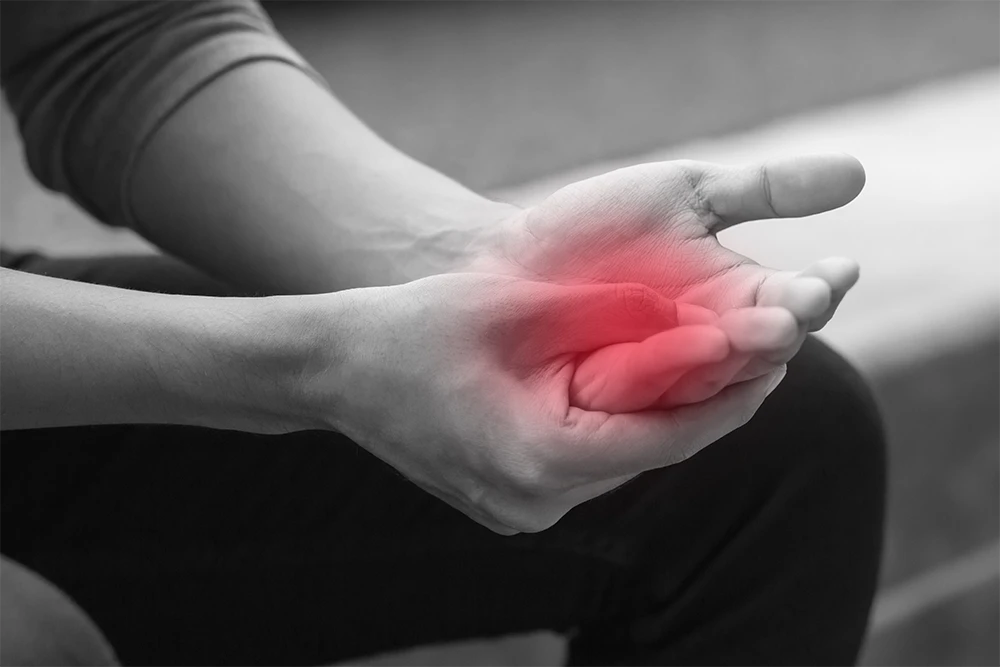Poor circulation is a common issue that can affect people of all ages and lifestyles. It occurs when blood flow to certain parts of the body is reduced, leading to symptoms like cold hands and feet, numbness, tingling, and even pain. If left unaddressed, poor circulation can lead to more serious health complications. Understanding the causes, symptoms, and solutions for poor circulation can help you take proactive steps to improve your overall health.
What Causes Poor Circulation?
- Peripheral Artery Disease (PAD)
Peripheral artery disease is a condition where the arteries that supply blood to the limbs become narrowed or blocked due to plaque buildup. This reduced blood flow can cause symptoms like pain, cramping, and coldness in the legs and feet, especially during physical activity. - Diabetes
Diabetes can lead to poor circulation by damaging blood vessels and nerves, particularly in the extremities. This can result in slow-healing wounds, numbness, and a higher risk of infections. - Blood Clots
Blood clots can form in veins, obstructing the flow of blood back to the heart. When a clot blocks circulation, it can cause swelling, pain, and warmth in the affected area. Blood clots can be life-threatening if they travel to the lungs, so it’s important to seek medical attention if you suspect one. - Raynaud’s Disease
Raynaud’s disease causes the small blood vessels in the fingers and toes to constrict excessively in response to cold or stress, leading to reduced blood flow and a sensation of coldness. The affected areas may also turn white or blue. - Obesity
Carrying excess weight can put additional pressure on your veins, making it harder for blood to circulate effectively. This can lead to swelling and discomfort in the legs and feet. - Sedentary Lifestyle
A lack of physical activity can contribute to poor circulation. Sitting or standing for long periods can cause blood to pool in the legs, leading to swelling and discomfort.
Symptoms of Poor Circulation
Recognizing the symptoms of poor circulation is crucial for taking timely action. Common signs include:
- Cold hands and feet
- Numbness or tingling in the extremities
- Swelling in the legs or feet
- Muscle cramps or pain during activity
- Slow-healing wounds
- Discoloration of the skin
If you experience any of these symptoms, it's important to consult a healthcare provider to determine the underlying cause and appropriate treatment.
Solutions and Remedies for Improving Circulation
- Stay Physically Active
Regular exercise is one of the best ways to improve circulation. Activities like walking, cycling, and swimming can help get your blood flowing and strengthen your cardiovascular system. Even simple movements, like stretching or leg lifts, can make a difference. - Maintain a Healthy Diet
A diet rich in fruits, vegetables, whole grains, and lean proteins can support healthy blood flow. Foods high in omega-3 fatty acids, such as salmon and flaxseeds, are particularly beneficial for circulation. Staying hydrated is also key to maintaining good circulation. - Wear Compression Garments
Compression socks or stockings can help improve blood flow in the legs by applying gentle pressure. This can prevent blood from pooling and reduce swelling. - Manage Stress
Chronic stress can negatively impact circulation by causing blood vessels to constrict. Stress management techniques, such as meditation, deep breathing exercises, and yoga, can help keep your circulation healthy. - Elevate Your Legs
If you experience swelling or discomfort in your legs, elevating them above the level of your heart can help reduce the symptoms by encouraging blood flow back to your heart. - Avoid Smoking
Smoking damages blood vessels and reduces circulation. Quitting smoking is one of the best things you can do to improve your overall health and circulation.
For those looking to go beyond traditional methods, the MeTech® THz Pulse Activator PA88 provides a sophisticated option. Utilizing Pulsed Electromagnetic Field (PEMF) technology, the PA88 emits electromagnetic pulses that stimulate cellular activity, promote vasodilation, and improve overall blood flow, addressing the root causes of poor circulation.
If symptoms persist or worsen, particularly with severe signs like chest pain or breathing difficulties, it is crucial to seek medical attention immediately. By understanding the underlying causes, making lifestyle adjustments, and incorporating innovative technologies like the MeTech® THz Pulse Activator PA88 into your routine, you can take significant steps toward enhancing your circulation and overall health.


